2021-2022 Cohort II Projects
A data-driven approach for water safety plans in sustainable buildings to predict and prevent disease
Most children and adults spend 8 hours or more per day in commercial and institutional (C&I) buildings (e.g., offices, schools), and even longer in elder care facilities or large apartment complexes. Architects and building managers understand how to manage energy use and air conditioning within buildings. However, over the past 5 years there is greater visibility of high-profile incidents wherein water quality within buildings puts people at risk from lead, copper, waterborne pathogens, or unaesthetic water.
Due to a regulatory grey area where buildings can be classified as a consecutive (and therefore regulated) drinking water treatment system if additional disinfectant is added to water at the building level, facilities managers have relied on limited risk management tools of water flushing, changing the water heater temperature set point, or managing the water softener regeneration schedule to reduce the likelihood that conditions are present such as stagnant conditions in water where bacterial pathogens such as Legionella grow 1,2. As a result, new CDC and state regulations for Legionella are forcing institutional buildings to spend $25k to >$75K per year for each building in preventative building operations to meet recommendations for the development of water safety plans 3,4.
A major cause for increased risk is the design or replacement of low-water flow devices within buildings. This conserves water quantity but leads to longer water age in buildings which is associated with loss of disinfectant residuals, corrosion and conditions that favor microbial growth. As a result, water conservation can have a tradeoff for maintaining high water quality within buildings. Water quality problems in buildings are typically evaluated using occasional sampling at a few points in buildings, which does not provide adequate data for decision-making. There is a need to be able to fingerprint water quality within buildings so that managers can be proactive (rather than reactive) in their approach to conserving water while avoiding undesirable health outcomes.
This project will use a multi-pronged approach to scale-up and validate a mechanistic model of water quality in a building to a full-building. High-resolution sensors for water quality parameters and occupancy installed in a building testbed will be used to gather data alongside microbiological measurements of water quality in the building. Using these data, different mechanistic and data-driven modeling approaches of building water quality will be compared to assess the best approach for informing a water management plan software. Following development of a predictive model at the building scale, water management interventions (flushing water to remove stagnant water in pipes, changing the water softener operation, and adjusting water heater set point temperatures) will be tested to evaluate the impact on water quality parameters and to test the efficacy of different predictive modeling approaches under real building operations. This work will reduce costs and human health issues from water quality problems in the built environment, reduce administrative and logistical burdens on facilities managers, increase trust in sustainable technologies for green buildings, and provide a road map for the expansion of decision support tools in the built environment.
References
(1) NASEM. Management of Legionella in Water Systems | The National Academies Press; National Academies of Sceinces, Engineering and Medicine: Washington, DC, 2019.
(2) Rhoads, W. J.; Ji, P.; Pruden, A.; Edwards, M. A. Water Heater Temperature Set Point and Water Use Patterns Influence Legionella Pneumophila and Associated Microorganisms at the Tap. Microbiome 2015, 3, 67. https://doi.org/10.1186/s40168-015-0134-1.
(3) Centers for Disease Control and Prevention. Developing a Water Management Program to Reduce Legionella Growth & Spread in Buildings: A Practical Guide to Implementing Industry Standards; US Department of Health and Human Services: Atlanta, GA, USA, 2017.
(4) Centers for Medicare & Medicaid Services (CMS). Requirement to Reduce Legionella Risk in Healthcare Facility Water Systems to Prevent Cases and Outbreaks of Legionnaires’ Disease (LD) (Revised 06.09.2017); 2018.
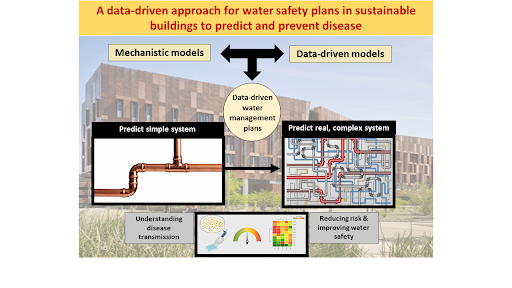
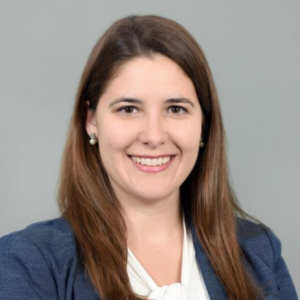
Kerry Hamilton
Assistant Professor
Arizona State University
[email protected]
Dr. Kerry Hamilton is an Assistant Professor with a joint appointment in the School for Sustainable Engineering and the Built Environment and the Biodesign Institute Center for Environmental Health Engineering at Arizona State University. She received her doctoral degree in Environmental Engineering from Drexel University in 2016 and Master of Health Science (MHS) degree in Environmental and Occupational Hygiene from Johns Hopkins University in 2009. She was a Fulbright Scholar to Australia in 2015 and Public Health Fellow at the US Environmental Protection Agency from 2009-2011.
Dr. Hamilton is an expert in the field of quantitative risk and decision analysis, particularly in the area of quantitative microbial risk assessment (QMRA). Her research focuses on predicting and preventing environmentally transmitted diseases by using computational and microbiological tools. She quantifies and characterizes pathogens in environmental media using culture- and molecular-based tools. Using this information, she and her team create actionable models for developing efficient environmental engineering and public health policies as well as management strategies that reduce infectious disease. She has applied these tools in areas of managing pathogens that grow in engineered water systems, understanding the environmental dimensions of antibiotic resistance, and informing microbial safety in food and agriculture.

Treavor Boyer
Professor
Arizona State University
[email protected]
Treavor Boyer is a Professor in the School of Sustainable Engineering and the Built Environment (SSEBE) at ASU, and is Program Chair of the Environmental Engineering undergraduate degree program. His research interests span water quality and treatment with numerous projects on innovative applications of ion exchange technology such as PFAS removal from impacted water and nutrient recovery from source separated urine. Dr. Boyer is the recipient of an NSF CAREER Award entitled “Sustainable Urine Processes through Integration of Education and Research (SUPER).” Dr. Boyer earned his Ph.D. and M.S. degrees in environmental engineering from the University of North Carolina at Chapel Hill, and his B.S. degree in chemical engineering from the University of Florida. Dr. Boyer was previously an Assistant Professor and Associate Professor in the Department of Environmental Engineering Sciences at the University of Florida.

Rain Richard
Postdoctoral scholar
Arizona State University
[email protected]
Rain Richard has her PhD in Environmental Engineering from Arizona State University. Her area of research is building water quality. Rain worked in industry for several years prior to attaining her PhD. What motivates her is the desire to bridge the gap between academic research and industry, something she believes is possible when research is done in the field and on a large scale.
IoT Sensors for Pedestrian and Traffic Safety Applications in Smart Cities
IoT Sensors for Pedestrian and Traffic Safety Applications in Smart Cities
Project Team:
Dr. David King (PI), ASU School of Geographical Sciences and Urban Planning
Dr. Hongbin Yu, Director, ASU NSF Center for Efficient Vehicles and Sustainable Transportation Systems
Darryl Keeton, President, Sensagrate
Mailen Pankiewicz, Pedestrian Safety Coordinator, City of Phoenix
Simon Ramos, Traffic Management and Operations Manager, City of Phoenix
PROJECT SUMMARY
On a per capita basis, the City of Phoenix is the most dangerous city in the U.S. for people walking. In 2018, 112 people were killed by cars, a 200 percent increase from 10 years prior (Suerth 2019), and over 1,000 people are injured each year by motorists. In 2018, Arizona had 3.3 pedestrian deaths per 100,000 people (Vandell 2020), while in Phoenix the per capita rate is double that. The map at left shows the locations of serious and fatal hotspots in the city, yet these data are not adequate to understand what causes these places to be so dangerous. The data shown on the map only describe where people were killed and injured, but do not help understand why these places are so deadly. For the City of Phoenix, the pedestrian safety crisis is a pressing public safety and quality of life challenge.
A key obstacle to improving safety is a lack of data for pedestrian and driver behavior. Phoenix does not have data that describes when and where pedestrians’ cross streets, at what frequency, and the cause of collisions. Moreover, cities do not have data detailing near-miss between people and drivers. These types of data have traditionally been extremely difficult to collect, if even possible, but new lidar technologies combined with software that detects and analyzes people and vehicles, including their speed, paths and locations, offer hope for granular analyses of behavioral aspects to safety and can inform safety interventions.
This research project will provide Phoenix with a data-driven approach to identify potentially life-saving improvements, and will be applied within the first year of this project from new city planning, roadway design changes, community awareness, and education.
In a collaborative partnership, ASU researchers, Sensagrate, and the City of Phoenix will deploy SensaVision, a real-time computer vision AI software for intelligent transportation system (ITS) solutions that provides traffic and safety data and analytics. The project team includes faculty and researchers from ASU, City of Phoenix staff, and the Sensagrate team. The City of Phoenix’s Pedestrian Safety Coordinator will assist in the planning, design integration and implementation of this project. The Sensagrate team brings the technology solution with technology updates for SensaVision, and has already been approved by Phoenix to implement it as a Proof of Concept Project. Sensagrate has eight employees who have expertise in computer vision, IoT, machine learning, AI, data analytics, smart city smart infrastructure, and ITS traffic monitoring and safety technology. This dynamic partnership between ASU researchers, a technology start-up a part of the ASU entrepreneur ecosystem, and the public sector leverages the capacities of each to succeed in improving pedestrian safety and assessing long-term and scalable solutions to deploy city- and region-wide.
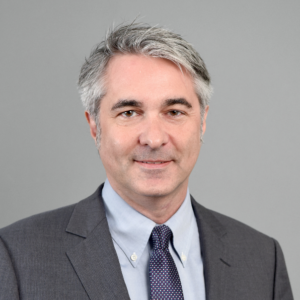
David King
Assistant Professor
Arizona State University
David King researches the codependence of transportation and land use planning along with transportation finance and economics. Of particular interest are transportation policies such as parking management, taxi services and microtransit, all of which integrate with land use planning. His work on finance examines how existing and new finance tools can raise revenues for more effective and just transportation systems. His current research focuses on taxi and jitney services, informal transit, street design, and how new technologies affect transportation finance and local policy.
In addition to academic accomplishments, King is a member of the Transportation Research Board’s Paratransit Committee and frequently consults with private firms and public organizations about challenges and opportunities in passenger travel, especially with regard to demographic and technological change.
King completed his doctorate at the University of California Los Angeles and a master’s in urban and regional planning at the Humphrey Institute at the University of Minnesota.
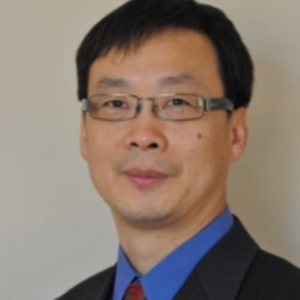
Hongbin Yu
Associate Professor
Arizona State University
Dr. Hongbin Yu is Associate Professor of Electrical, Computer and Energy Engineering (ECEE) at Arizona State University. He received his PhD in condensed matter physics from University of Texas at Austin in 2002, and was a postdoc at UCLA and Caltech from 2003-2005. He joined the ASU faculty in 2005, and currently Director of the National Science Foundation Center for Efficient Vehicles and Sustainable Transportation Systems (EVSTS) (https://evsts.asu.edu), which automotive sensors and electronics are among the research thrust areas of the center. His research interests include novel electronics device fabrication and characterization; flexible, transparent and wearable electronics; integrated microwave and power devices, and his recent focus on LiDAR/Camera sensors and sensor fusion in automotive and transportation applications.
Reducing the Urban Heat Island Effect with Infrared-Reflective Photovoltaic Panels
The deployment of photovoltaic (PV) systems has soared over the recent years. However, addition of PV modules to any environment shifts the thermal balance by increasing the daytime net available radiation—mostly due to a reduction in albedo—and decreasing the nocturnal heat release—by shielding radiative emission from the surface beneath the modules. Field studies have shown that, in Arizona, the ambient temperature within PV power production facilities can increase by up to 2 °C over built environments such as parking lots. In urban environment, this additional heat contributes to the urban heat island (UHI) effect. In these UHIs, the economic and human costs associated with each additional Celsius degree is well documented and can be particularly severe in regions affected by increasing heatwaves, such as the Southwestern United States.
The thermal effect of PV modules on their environment is not a surprise when considering the balance of energy within them. In a standard crystalline-silicon-based module, only about 20% of the incoming solar irradiance is converted into electric power. The bulk of the remaining 80% is lost for electricity production, but still absorbed by the PV module and released to the surrounding environment as heat. As a result, the temperature of PV modules in the field is usually 20–30 °C above the ambient.
Some of these “waste-heat-generating” losses are inherent to the physics of solar cells and cannot be avoided without deeply altering the architecture of the module. Conversely, long-wavelength below-bandgap photons—corresponding to photons that are too-low energy to be absorbed by the solar cell—cannot be converted to electricity but they do not need to be absorbed (and converted into waste heat) either. The solar cell absorber is generally transparent to these longer-wavelength photons, and their absorption and thermalization is due to other components of the module. Ideally, these photons would be reflected towards the sky and would not contribute to the thermal balance of the module and its surroundings. However, this parameter is rarely considered in the optimization of PV products.
In this project, we propose to investigate and demonstrate how reducing the absorption of longer-wavelength photons (>1200 nm) through optical management (increased transparency and reflectance) can decrease the thermal effect of PV systems on their surroundings and reduce the associated UHI effect. We aim to achieve a reflectance above 90% for long-wavelength photons. This would increase the solar-irradiance-weighted albedo of PV modules from less than 8% today to above 20%. Consequently, accounting for the electric power production from the module, the fraction of the solar irradiance absorbed and converted to waste heat by the PV module would decrease from 70–75% to 55–60%, better than most natural and urban artificial surfaces. When compared with current unoptimized commercial PV modules, we estimate that our smart PV module technology would result in a temperature decrease of 1 °C or more in the surroundings of the PV system, thus reducing the contributions of the PV system to the UHI effect.
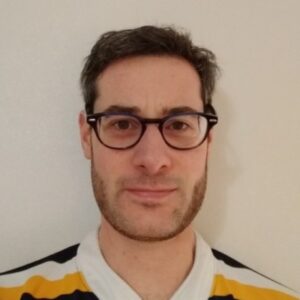
Arthur Onno
Assistant Research Professor
Arizona State University
Arthur Onno is an Assistant Research Professor in the School of Electrical, Computer and Energy Engineering at Arizona State University. His research focuses on photovoltaic solar cells and modules, in particular on device physics, characterization, and modelling, and on optimization of contact layers to solar cell absorbers. Arthur received his PhD in 2017 from University College London, where he studied the epitaxial growth of III-V materials on silicon for photovoltaic applications. For this work, he was awarded the Student Award at the 2017 European Union Photovoltaic Solar Energy Conference (EU-PVSEC). Before starting his PhD, Arthur worked as a solar energy technology foresight analyst for TotalEnergies, based in Paris and San Francisco. Arthur received his Bachelor and Master’s degrees from the Ecole Polytechnique (France), in 2009 and 2011, respectively.

Zhengshan (Jason) Yu
Assistant Research Professor
Arizona State University
Zhengshan (Jason) Yu is an Assistant Research Professor in the School of Electrical, Computer, and Energy Engineering at Arizona State University, where he received his Ph.D. with an honor of “Palais’ Outstanding Doctoral Student Award”. His research at ASU focuses on new materials and device designs for high-efficiency silicon-based tandem solar cells including perovskite/silicon tandems. Prior to ASU, he worked for a US silicon solar cell and module manufacturer, Solar Enertech, eventually serving as Director of Technology Center for four years. He was the recipient of the inaugural IEEE PVSC “Outstanding Technical Contribution Award” in 2017 for his achievement of world-record efficiency of perovskite/silicon tandem cells, and he is a co-founder of a photovoltaic start-up company, Beyond Silicon.
Softlight: Chemical free technology for removing water hardness
The worldwide market for water softening (i.e. removal of Ca2+ and Mg2+ hardness ions from water) is growing at ~7% and will exceed $10 Billion by 2024. Point-of-use (POU) water treatment is widespread due to concerns and aesthetics regarding the quality of municipal drinking water. Additionally, industrial water needs by major sectors (beverage, semiconductor, energy production, hospitality, etc.) requires water softening to prevent corrosion, scaling and product purity. However, an unintended consequence of POU water softening is the issue of salt accumulation in sewer systems, which influence city’s discharge regulations and water reuse goals. For example in the year 2000, annual salt loadings to Phoenix wastewater from water ion exchange softening systems were ~45,500 tons, representing 39% of society’s salt contribution to wastewaters. Furthermore, a significant negative health impact associated with current softening systems (ion exchange-IX) involves the addition of salt in order to remove hardness. The EPA guidance level for sodium in drinking water is 20 mg/L. This value was developed for those sensitive individuals restricted to a total sodium intake of 500 mg/day. After conventional IX treatment, Arizona drinking water contains ~160 mg/L of sodium, which exceeds this guidance level by a factor of eight.
SoftLight technology will provide chemical-free (i.e., no salt or other chemicals) treatment that selectively removes hardness ions from water with associated benefits that include (1) broader health benefits associated with reduced sodium release in drinking water by conventional ion exchange systems, and (2) environmental benefits associated with reduced sodium and salinity discharge to the environment. The key innovation of the SoftLight system is the integration on optical fibers of photo-responsive polymers, which can undergo conformational changes between isomer structures – with the two isomers having orders of magnitude different complexation capacity for hardness ions in water. When light from a light emitting diode (LED) is launched into the optical fibers, a portion of the light is refracted through the core, but a portion of the light also is absorbed by the photo-responsive polymers. Photons of light can actuate the photo-responsive polymer structures, transforming the structure (e.g., trans- or cis- isomers). Upon changes in UV-light irradiation the open form of photo-responsive polymers/copolymers bind Ca2+ and Mg2+. Subsequently, by switching to visible light results in a high concentration of the closed polymer form, thereby releasing the hardness ions.
Beyond manufacturing or in-home drinking water uses, other device-specific needs exist. For example, in the biomedical space the global dialysis market exceeds $100B annually, growing at 4.5% with higher growth of home dialysis applications that require softened water to avoid dialysis device operational or human health problems. Baxter Healthcare is a leader in home dialysis and identified the need for a chemical free, low energy use, compact size technology to soften water; they added additional funding on SoftLight after the initial Zimin Foundation award. We seek to develop a transformative, scalable softening technology capable of addressing multiple markets – but will focus initially on meeting stringent requirements of the home dialysis device, after which other POU or industrial applications could be explored.
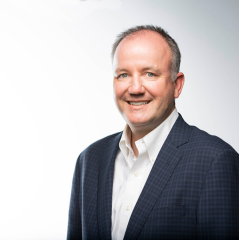
Paul Westerhoff
Regents Professor
Arizona State University
Dr. Paul Westerhoff is a Regents Professor in the School of Sustainable Engineering and the Built Environment at Arizona State University and the Fulton Chair of Environmental Engineering. He joined ASU in 1995 and after serving as the Civil and Environmental Engineering Department Chair he was the Founding Director for the School of Sustainable Engineering and the Built Environment. Since then he has served as an Associate Dean of Research in Engineering, ASU Vice Provost for Academic Programming, and Vice Dean for Research and Innovation in Engineering.
He is the Deputy Director of a National Science Foundation Nanosystems Engineering Research Center for Nanotechnology Enabled Water Treatment (newtcenter.org) . He has over 320 journal publications and multiple patents on his research related to fate of nanomaterials in water, developing novel technologies for water and reuse treatment, and understanding reactions related to the fate of pollutants during treatment or in natural systems with a focus on oxo-anions, natural organic matter and micropollutants. He is the recipient of several awards including the recipient of the 2020 A.P. Black award from the American Water Works Association, 2019 NWRI Clarke Prize for excellence in the fields of water science and technology, 2017 Sustainable Nanotechnology Organization Annual Achievement Award, ASU Outstanding Doctoral Mentor for 2015, 2013 ARCADIS/AEESP Frontier in Research Award, and 2006 Paul L. Busch Award.